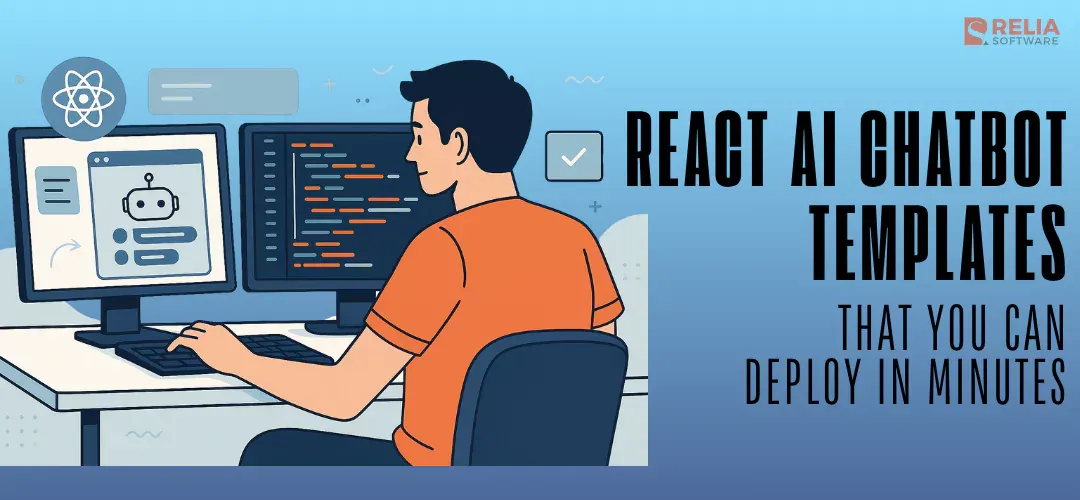AI chatbots are popping up everywhere, from customer support to internal tools and SaaS dashboards. But spinning one up from scratch? That’s a time sink, especially if you just want to test an idea or ship a quick MVP.
The good news: the React ecosystem has your back. With the rise of open-source tools and GPT-powered APIs, you can now deploy polished, functional chatbots in minutes, not weeks.
In this blog, we’ll explore 5 plug-and-play React AI chatbot templates that are open-source, fast to deploy, and perfect for everything from personal side projects to startup prototypes. No need to worry about routing, state management, or even the UI, these templates handle the heavy lifting so you can focus on customizing and shipping.
>> Read more: Top 9 Best Chatbot Development Frameworks
5 React AI Chatbot Templates
I've handpicked 5 open-source React chatbot templates that strike a great balance between clean design, powerful features, and fast setup. Each one works out of the box and can be tweaked to match your use case, whether you're building a support bot, internal tool, or AI assistant. Let’s break them down.
Vercel Next.js AI Chatbot
Tech Stack: Next.js App Router, Tailwind CSS, OpenAI
What Makes It Stand Out: Built by the Vercel team, this template is a reference-grade example of modern React + GPT integration. It uses Server Actions and React Server Components for seamless streaming and is optimized for instant Vercel deployment.
Ideal For: Developers exploring Next.js 13+ features or looking to prototype a full-stack AI app fast.
Why You’ll Like It: Minimal setup, no need for client-side fetching, and native support for OpenAI’s streaming responses.
GitHub: vercel/nextjs-ai-chatbot
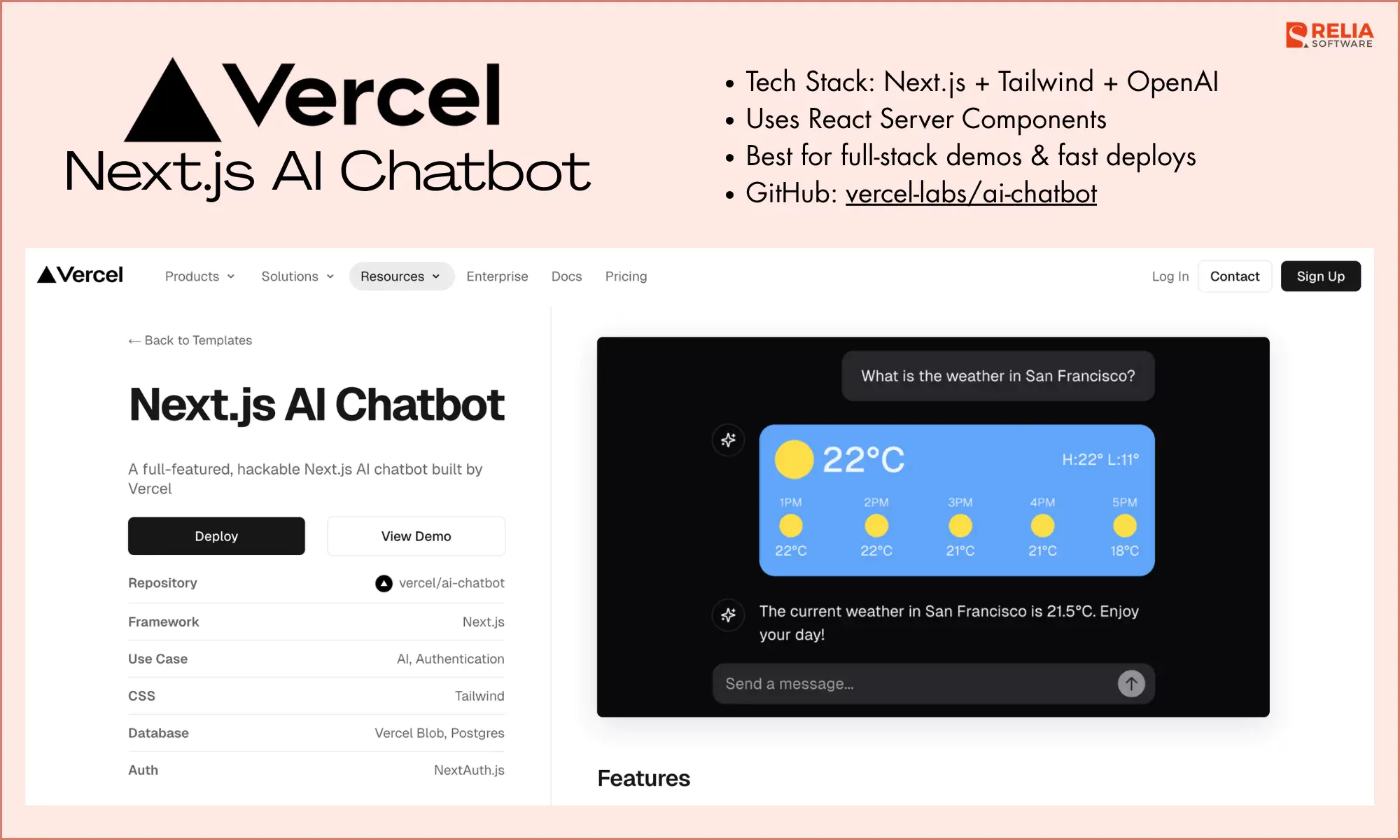
Horizon UI – ChatGPT AI Template
Tech Stack: React, Chakra UI, OpenAI API
What Makes It Stand Out: This template brings a polished, professional dashboard-style interface with modular Chakra UI components. It’s clean, mobile-responsive, and built for teams that care about UX out of the gate.
Ideal For: Internal tools, admin dashboards, or any app where a chatbot is one part of a broader interface.
Why You’ll Like It: Dead-simple structure, great out-of-the-box styles, and easy to scale into more complex layouts.
GitHub: horizon-ui/chatgpt-ai-template
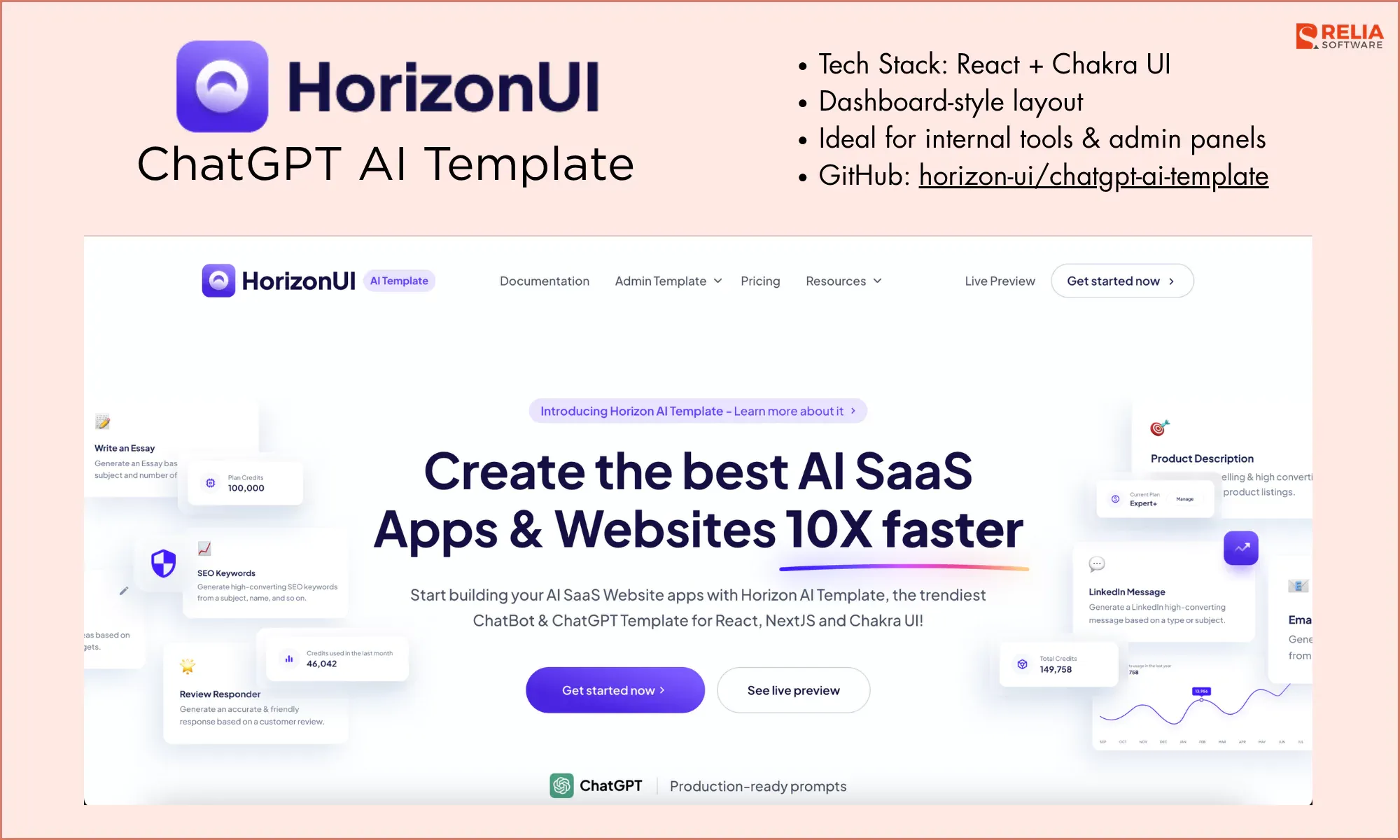
Fireship React Firebase Chat
Tech Stack: React + Firebase Auth + Firestore
What Makes It Stand Out: Built by Fireship, this template offers a clean, production-ready setup for Firebase-powered real-time chat. It includes Google authentication and live Firestore updates out of the box.
Ideal For: MVPs, internal tools, or any React projects that uses Firebase for authentication and real-time data sync.
Why You’ll Like It: No backend setup required, you get instant login, user management, and chat persistence. It’s minimal, well-documented, and easy to extend with GPT functionality.
GitHub: fireship-io/react-firebase-chat
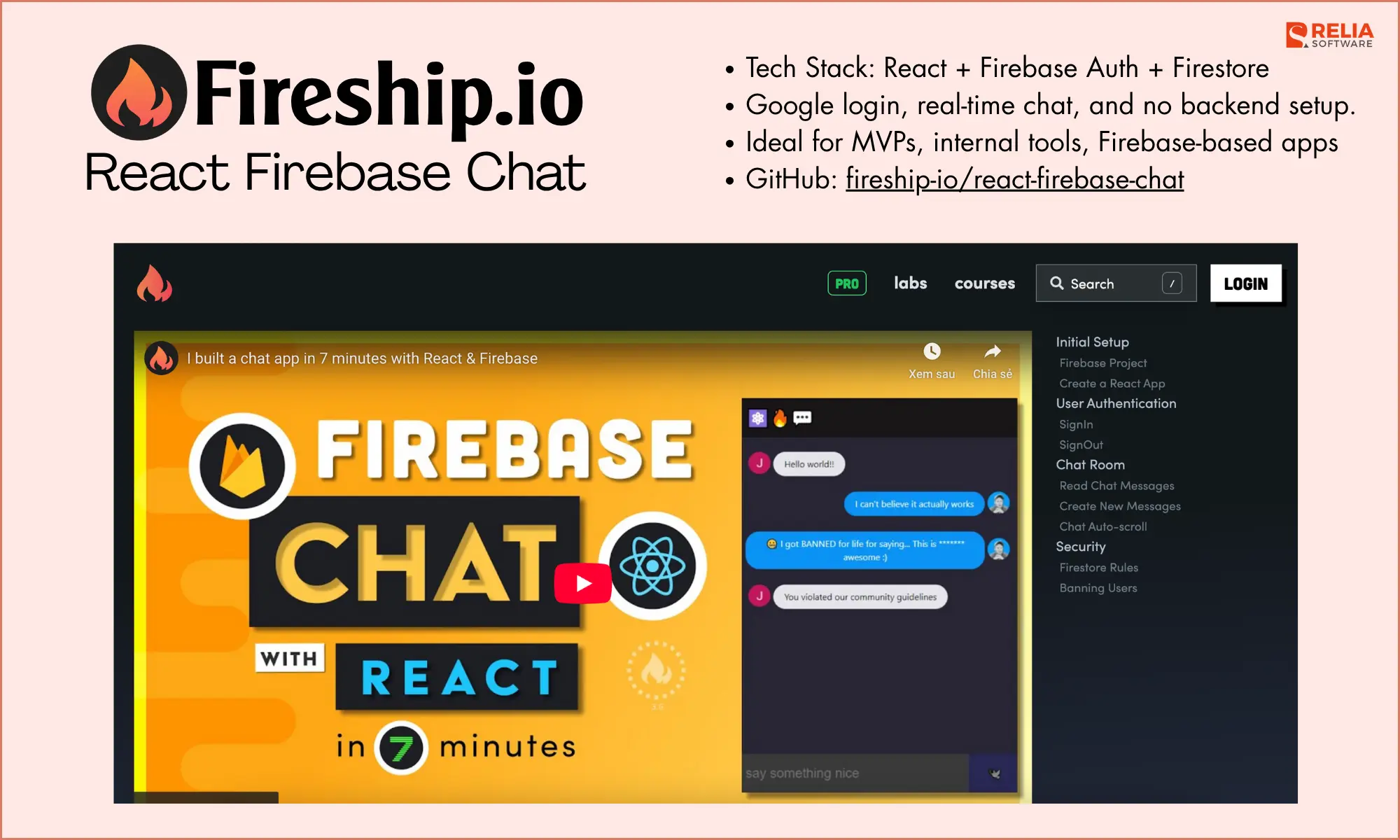
React ChatGPT Clone
Tech Stack: React, Vite, OpenAI API
What Makes It Stand Out: Lightweight and easy to understand, this template strips things down to the essentials. No fancy styling or complex state logic, just a simple GPT-powered chat UI.
Ideal For: Developers learning how to work with GPT APIs or building a quick proof-of-concept.
Why You’ll Like It: Super clean architecture. Perfect for experimentation, hacking together new ideas, or building teaching demos.
GitHub: uigywnkiub/react-chatgpt-clone
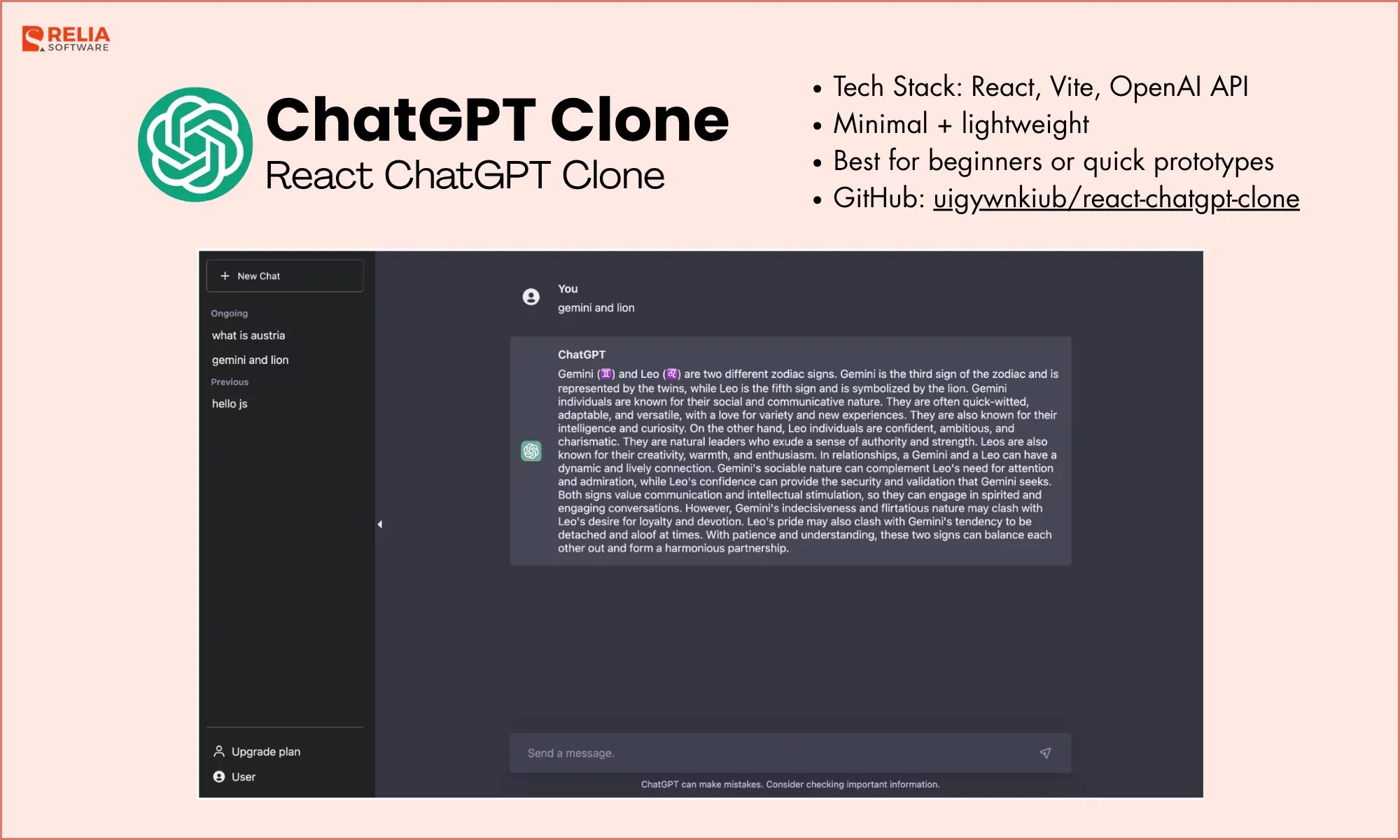
Chatbot UI – Custom GPT Assistant Interface
Tech Stack: React, Tailwind CSS, (optional) LangChain.js
What Makes It Stand Out: Inspired by ChatGPT itself, this template goes beyond basic Q&A. It supports assistant personas, function calling, and streaming, all in a clean, extensible interface.
Ideal For: Building full-fledged AI agents, developer tools, or assistants with specialized knowledge and custom logic.
Why You’ll Like It: Highly customizable, feature-rich, and battle-tested by the open-source community. It’s arguably the most scalable foundation on this list.
GitHub: mckaywrigley/chatbot-ui
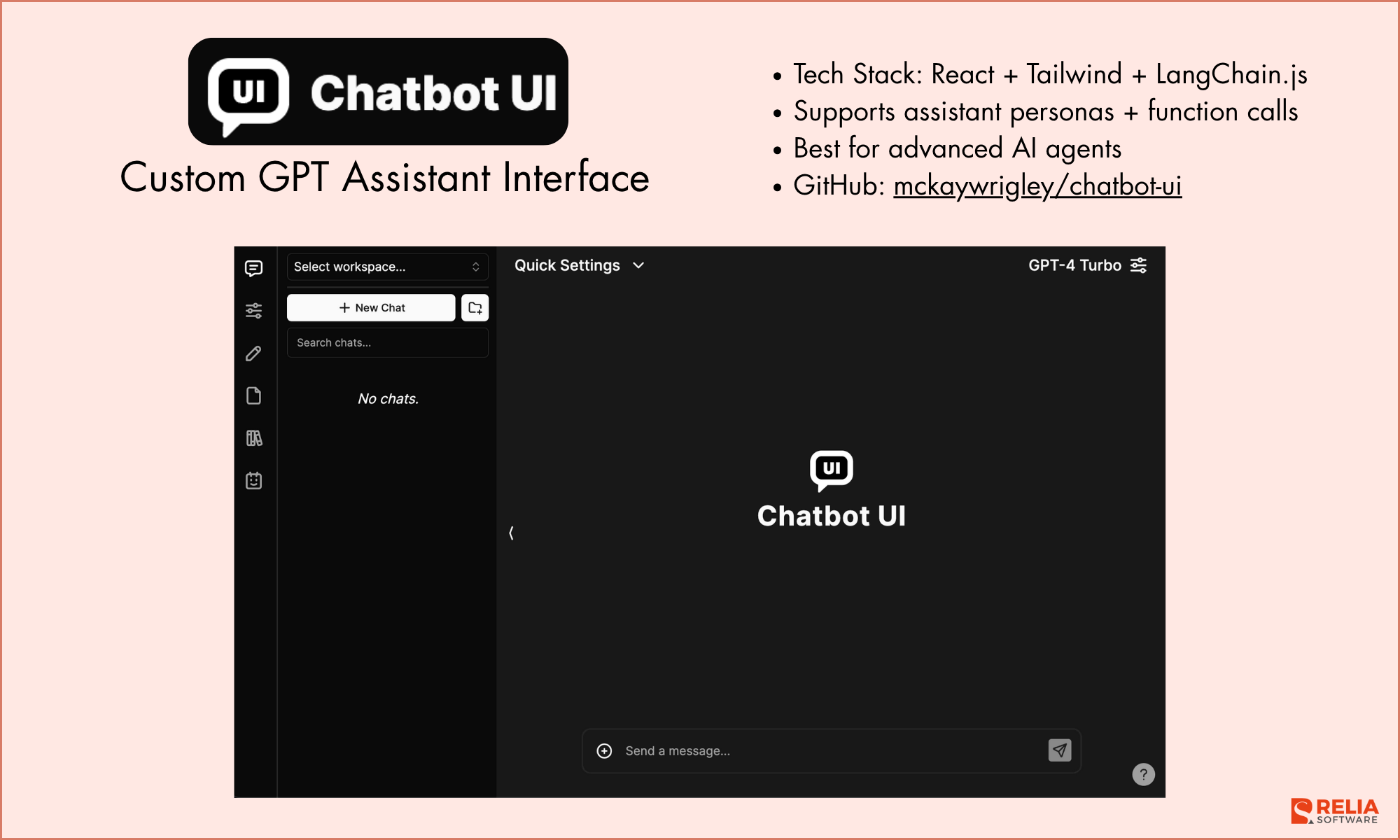
>> Read more:
React AI Chatbot Use Case Matching
Not all templates serve the same goal. Here’s a quick breakdown to help you choose the right one based on your project type, need for authentication, and flexibility in extending features:
| Template | Best For | Auth Support | Extensibility |
| Vercel AI Chatbot | General-purpose apps, demos, server components | ❌ | ⭐⭐⭐⭐ |
| Horizon UI ChatGPT | Dashboards, internal tools, polished UIs | ❌ | ⭐⭐⭐⭐ |
| Fireship | Firebase-backed apps, user-based experiences | ✅ | ⭐⭐⭐ |
| React ChatGPT Clone | Learning projects, lightweight MVPs | ❌ | ⭐⭐ |
| Chatbot UI | Custom AI agents, function calling, GPT tooling | Optional | ⭐⭐⭐⭐⭐ |
What This Table Tells You?
- Auth Support: Whether the template includes or supports user authentication out of the box.
- Extensibility: How easily you can scale or customize the template’s architecture for more advanced use cases.
- Best For: The primary context in which the template shines. This can save you from over-building or under-delivering.
If you’re just exploring GPT or working on a side project, make it simple. If you’re aiming for something production-ready or tailored to a specific workflow (like internal tools or assistant interfaces), lean toward extensibility and auth-ready setups.
Integration Guide
Most of these templates are ready to run in under 10 minutes. Here's a typical setup flow you can follow across the board, whether you're deploying to Vercel or running locally for testing.
1. Clone the Repository
Start by grabbing the codebase from GitHub:
git clone https://github.com/your-chosen-template
cd your-chosen-template
Make sure to review the README.md—most templates include project-specific notes or environment setup tips.
2. Install Dependencies
Install required packages:
npm install
# or use
pnpm install
Templates built with Vite or Next.js may also require some peer dependencies, so keep an eye on the terminal output.
3. Get Your OpenAI API Key
To connect your chatbot to GPT:
- Go to https://platform.openai.com/account/api-keys
- Sign in or create an OpenAI account
- Click Create new secret key
- Copy it and store it securely—you won’t see it again
Paste it into a .env.local file like this:
# .env.local
OPENAI_API_KEY=sk-xxxx...
Some templates (like Fireship) may need Firebase credentials as well. Follow the docs for those. If you're using a hosted environment (like Vercel), add it via the dashboard under Project Settings → Environment Variables.
4. Run the App Locally
Kickstart your development server:
npm run dev
You should see the chatbot UI up and running. From here, test prompts, refine the UX, and make it your own.
5. Customize the Experience
The best part of using these templates is that they’re not opinionated. You can:
- Tweak styles and themes (Tailwind, Chakra, or plain CSS)
- Swap out the GPT prompt logic
- Add authentication layers (e.g., Firebase, Auth0)
- Hook into your own data APIs or databases
These templates are built to be extended. Feel free to think outside the box.
>> Explore further:
- Top 10 Best AI Development Tools for Software Developers
- Top 19 AI App Ideas For Businesses by Industry
Conclusion
You don’t need to start from scratch or spend weeks configuring boilerplate to build a smart, user-friendly chatbot. React empowers developers to harness powerful AI tools like GPT with ease. With these templates, you can skip the setup hassle and go straight to building value.
- They’re all free and open-source
- Ready for instant deployment
- Simple to customize and extend
Pick the template that aligns with your stack and goals—and let the innovation begin.
Start building now, and focus on what truly matters: solving problems with great user experiences.
>>> Follow and Contact Relia Software for more information!
- coding
- automation
